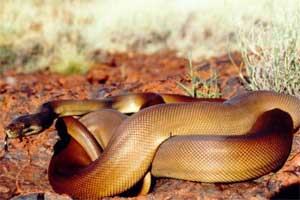Cape York Peninsula displays an amazing variety of vegetation and biodiversity.
The most spectacular examples are the dense rainforests of the Jardine River and Iron Range national parks. These steamy, species-rich forests are more akin to New Guinea’s jungles and are filled with palms, vines, fig trees, wild banana and ground orchids. Around Weipa there are tall eucalypt forests and along the Archer and Wenlock rivers are impressive melaleuca gallery forests with trees standing 40 metres tall.
Around Weipa there are tall eucalypt forests and along the Archer and Wenlock rivers are impressive melaleuca gallery forests with trees standing 40 metres tall.
Mangroves are very common along both coastlines where estuaries occur, with 40 different species present. Newcastle Bay has the best example of mangrove ecology with some giant trees rising 30 metres. The Cape’s fish, bird, reptile and mammal life is very dependent on these mangroves.
The Wet Tropics World Heritage Area above Cairns, extends as far north as the peninsula’s four national parks. This special reserve is only a fraction of Australia’s land area but it contains a staggering 36% of all mammal species, 50% of bird species and 60% of butterfly species found on the continent.
Cape York’s most visible mammals are the 30 species of bats and flying foxes. Kangaroos and agile wallabies are also a common sight along riverbanks and at isolated campsites. Less frequently seen are dingos, quolls, bandicoots and possum. Some rare species unique to this area are Bennett’s tree kangaroo, Lumholtz tree kangaroo and the musky-rat kangaroo.
Birds of all kinds are prolific on the Cape with up to 400 species recorded. The most spectacular is the golden bower bird, closely followed by the spotted cat-bird, mangrove golden whistler and rainbow bee-eater. The riflebird, eclectus parrot and palm cockatoo are found nowhere else in Australia. The best areas for bird spotting are the Iron Range, Lockerbie Scrub, Lakefield National Park and Musgrave region. Water birds abound here, with the iridescent black and white jabiru - king of the storks. The stately brolga delights visitors with his graceful courtship displays, which are also replicated in Aborigine traditional dances.
Water birds abound here, with the iridescent black and white jabiru - king of the storks. The stately brolga delights visitors with his graceful courtship displays, which are also replicated in Aborigine traditional dances.
Reptiles and frogs make their presence felt, with 22 rare species found nowhere else. It’s hard not to fall in love with the beautiful amethystine green and olive pythons, but the king brown and taipan snakes are less desirable as playmates.
Sea turtles often come ashore to lay eggs and are very cute to watch. Not so the fresh and saltwater crocodiles, that glide silently along many waterways in the north.
The butterflies are truly stunning, especially the 20cm wingspan birdwing and the electric-blue Ulysses. Insects - well it’s enough just to casually mention that Cape York has 119 species of mosquito and leave it at that.
- Rentals New Zealand
- Rentals Australia
Talk to us +61 7 4041 2191 Facebook
